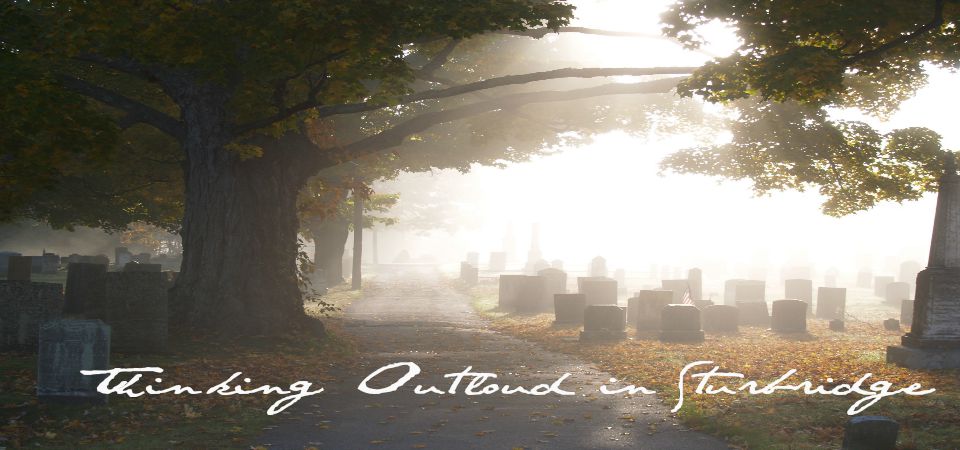 There's an interesting plan in the works initiated by the Sturbridge Police Department. The plan is one where residents can sign up and obtain a lime green traffic cone with the word "SLOW" printed on it to place near the road in front of their house. According to Sturbridge police, "traffic has a memory", and if the drivers see these lime green traffic cones with the word "SLOW" on them they will slow down, and do so each time they travel the area.
There's an interesting plan in the works initiated by the Sturbridge Police Department. The plan is one where residents can sign up and obtain a lime green traffic cone with the word "SLOW" printed on it to place near the road in front of their house. According to Sturbridge police, "traffic has a memory", and if the drivers see these lime green traffic cones with the word "SLOW" on them they will slow down, and do so each time they travel the area.Right.
If a speeder pays little heed to a speed limit sign, they will pay even less heed to a lime green traffic cone with the word "SLOW" emblazoned on it.
I agree that traffic does have a memory, though. The memory most have traveling through Sturbridge is you can speed down Route 148 after 6PM , and there will not be a cruiser waiting around the bend, or whip up Route 20, past Walmart to Route 49 with no chance of seeing a cruiser. Those places, plus many others in town, are memorized by folks wanting to get somewhere faster than someone else.
What the green cones will do is give the community a "project" they can participate in, and feel as they are helping to solve the problem, thus quieting the complaints of speeding for a bit.
As I said, I agree that traffic does have a memory. When I was a teenager growing up in Medfield, we knew that if we wanted to drive to the Natick Mall along Route 27 we had to pass through the town of Sherborn. The Sherborn police had, and still has, a reputation for pulling over anyone, for any infraction. Speeding, failure to use a turn signal, a license plate light being out, exhaust too loud, and anything else they felt they could defend in court. Sherborn is a very small town with no industry, so we all thought they needed to stop everyone in order to fill the town coffers. What ever the reason was, we saw the results each time we drove through that town. Many cars pulled over by the police along the roadways each time we passed through.
We developed a "memory" very quickly. We'd scream up Route 27 in Medfield along a portion of the road built like the Nevada Salt Flats. As we closed in on the Sherborn town line we'd down shift, and practically coast the several miles through that town.
We did it every time we entered Sherborn. I still do it as an adult. If the speed limit says "30 MPH" I go 30, not 35, or even 32 MPH. The Sherborn Police have a zero tolerance policy.
About twenty years ago, in the town of Medway, there was a horrible accident involving a child and a tractor trailer on Route 109. As a result the town placed large yellow sighs on the roadway at the eastern end and the western end warning drivers they were entering a "Zero Tolerance Speed Zone", and they had they had the manpower in wait to enforce the warning. The result has been a dramatic drop in speeding in that busy area of shops and businesses along Route 109.
The warning signs, the police presence, and their enforcement of the warning developed a "memory" something that little lime green cones cannot do no matter how well intentioned.
Last fall, Sturbridge's Chief of Police and I met to discuss a plan of action to curb the speeding along Route 148. An increased police presence, and the placement of the radar speed sign was discussed along with a large sign placed at the start of Route 148 near route 20, and another for the southbound traffic a mile or so up the road. The sign would warn drivers that they were about to enter a "Zero Tolerance" speed zone, and the police would enforce that warning in earnest.
I haven't forgotten, but I have become just a little upset reading about this traffic cone idea, and with the exception of the speed radar sign being placed on the road a few times, and an occasional cruiser lying in wait, the promised signs have yet to come. Is the budget really that bad?
I do have a suggestion, one that may cut the the speeding here in town a great deal:
Place large signs at all the major entrances into Sturbridge warning that the entire Town is a "Zero Tolerance Zone", and then enforce the heck out of it. No tolerance. None.
Yes, traffic has a memory, and like teaching a child manners, or a dog a new trick, they will eventually "get it", and it will be retained.
Cones are a decent idea, but at this point we are beyond it. If the town is serious about curtailing speeding, then get serious.

I hope town officials do a bit of research before spending time (and taxpayer money) on cones or any other traffic calming effort. As suggested here, the most effective means of slowing cars appears to be live speed patrolling but unfortunately, this is very expensive. On the other hand, radar speed signs have proven over and over again to be highly effective - particularly around school zones, neighborhood streets and work zone areas. There's a comprehensive list of links to government traffic calming studies collected at www.informationdisplay.com. Also a nice review of various traffic calming options can be found at www.stopspeeders.org.
ReplyDeletecones?
ReplyDelete